At the end of a very busy year, here’s a reminder of the stories that stood out for our readers
Every week Building Design publishes the big impact stories that affect the architecture profession, and here are some of the long-running stories that have demanded our attention at multiple points during the year.
The general election and a new Labour government

Even before it was announced by a rain-sodden Rishi Sunak outside Number 10 to the sound of protestors blasting out D:Ream’s Things Can Only Get Better, July’s general election was a foregone conclusion.
Everyone, within the built environment sector and the country at large, fully expected Labour to win; the only question was by how much. When Starmer rolled in with a majority of 174 seats, the biggest since Tony Blair in 1997, it seemed to spell the end of the prolonged period of chaos in Westminster that had done so much to hold back confidence and investment.
The new government promised growth, but concerns about how exactly this would be achieved mounted over the summer as the party repeatedly warned of the dire state of the public finances. It was not until the autumn Budget that the picture became clearer as chancellor Rachel Reeves unveiled £40bn in tax rises, including a £25bn hike in employers’ national insurance and a rise in the national living wage.
As the business community reacted angrily to many of the announcements, the government was forced to defend a major boost to public spending which the Office for Budget Responsibility (OBR) does not think will have a lasting impact on growth. While the fact that industry commentators are still talking about the tax rises on an almost daily basis says a lot about the impact which the measures have had, others have seen reasons for optimism. Major supply side reforms, including in the planning system, and a series of ambitious targets for housing and decarbonisation, have raised the prospect of a more promising year ahead for construction.
>> Labour landslide a ‘monumental’ event for the UK – industry leaders react to election victory
>> A guide to the key players shaping Labour’s built environment policy
>> New government sets out plans for housing and infrastructure in first King’s Speech
>> Autumn Budget 2024: key measures for construction at a glance
>> Confidence slumps to lowest level for a year as practices weigh impact of autumn Budget
Plans to redesign of Liverpool Street Station
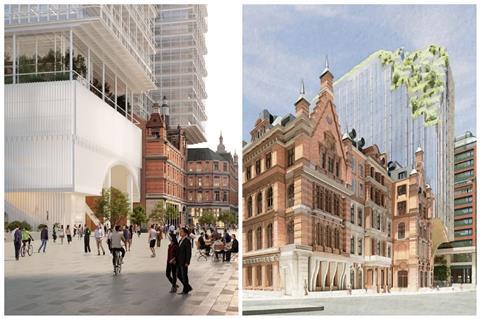
It has been one of the most talked about projects in London since the pandemic. Network Rail’s plans to redevelop Liverpool Street station immediately provoked an outcry from heritage campaigners when first unveiled in 2022. Things got worse for the £1.5bn scheme, designed by development partner Sellar and lead architect Herzog & de Meuron, when a planning application was submitted the following year and the full scale of the grade II-listed station’s proposed transformation was revealed.
Rumours soon began to swirl that a redesign was in the works, confirmed first by Building in May this year. Then, Network Rail dropped a bombshell by announcing a radically different proposal in November, designed by a different architect, Acme, and with Sellar nowhere in sight.
A planning application for the new scheme is due to be submitted in January, and with the same heritage groups which blasted the former proposals already expressing similar levels of dismay about the new designs, the controversy looks set to continue for some time yet.
Here’s how Building Design covered the story this year:
>> Herzog & de Meuron’s £1.5bn Liverpool Street station plans hit by more than 2,000 objections
>> Herzog & de Meuron cutting down controversial tower on £1.5bn Liverpool Street station redevelopment
>> Network Rail unveils ‘completely reimagined’ plan for Liverpool Street station redevelopment
>> Campaigners rip into Acme’s new Liverpool Street station plans
The row over plans to demolish Oxford Street’s M&S store
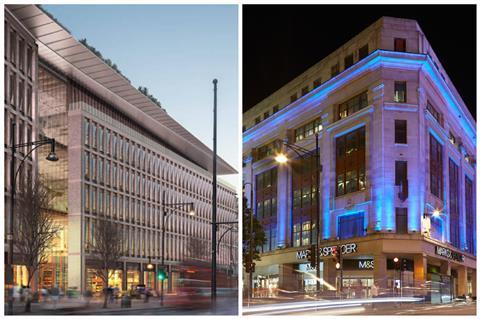
If ever there was a litmus test of the new government’s commitment to reforming the planning system and to ‘get Britain building’, then the saga over whether the country’s best-known retailer could rebuild its flagship store was it.
At the start of the year, M&S was putting the finishing touches to its appeal – which had been granted the previous autumn – against the then communities secretary Michael Gove’s decision to refuse it planning last summer on the grounds of its heritage and carbon impacts.
The appeal began in February and a couple of weeks later – at breakneck speed given the protracted delays that have hit the ITV Studios scheme on London’s Southbank – a High Court judge quashed Gove’s decision.
Fast forward several months to a new government and Gove’s successor Angela Rayner decided M&S could go ahead, after all, and knock down its main base of nearly 100 years on London’s Oxford Street.
The retailer’s chief executive Stuart Machin, who has not been shy to use punchy language throughout the process, said: “I am delighted that, after three unnecessary years of delays, obfuscation and political posturing at its worst, under the previous Government, our plans for Marble Arch have finally been approved.”
Opponents were less pleased, calling it a “missed opportunity”. The director of Save Britain’s Heritage Henrietta Billings said: “The government has chosen the easy option when it had a real chance to show leadership and ambition.” Watch this space.
Here’s how Building Design covered the story this year:
>> High Court overturns Gove’s decision to reject M&S’s Oxford Street plans
>> Days of demolish and rebuild ‘long gone’, construction chief tells conference
>> Rayner backs M&S’s Oxford Street plan to demolish flagship store
>> Save Britain’s Heritage calls for urgent planning policy reforms after ‘short-sighted’ M&S decision
>> Heritage, sustainability, and dysfunction: the lessons of the M&S decision
Industry reckons with damning findings of Grenfell Inquiry
On 4 September came construction’s day of reckoning as the Grenfell Tower Inquiry published the findings of its second phase. The conclusions were damning.
The seven-volume report found that decades of government failure, a slapdash construction culture and the dishonesty of building product manufacturers had, in combination, resulted in the deaths of 72 people at the hands of the fire on 14 June 2017.
Those responsible for the disaster bore that responsibility “in most cases, through incompetence, but in some cases through dishonesty and greed,” the inquiry chair Martin Moore-Bick concluded.
Despite being branded as “dishonest” in the report, product manufacturers Arconic, Celotex and Kingspan came out fighting, defending their involvement in the disaster.
Nonetheless, the government promised to bar companies named and shamed in the Grenfell Inquiry report from being given government work in future.
The industry is still waiting for the government’s full response to the report.
>> Product manufacturers come out fighting after Grenfell Inquiry’s damning verdict
>> Grenfell Inquiry report: Studio E “bears a very significant degree of responsibility” for disaster
>> What were Studio E’s failures on the Grenfell Tower refurbishment?
The City’s tallest tower finally makes it over the line….again
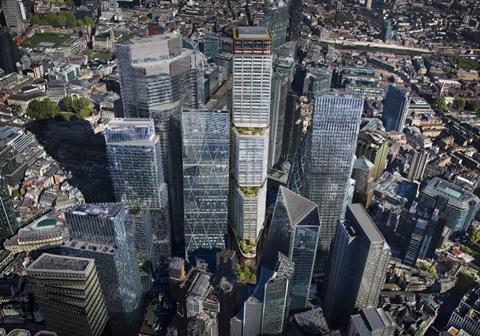
The saga over 1 Undershaft, the long-planned apex of the City of London’s main cluster of towers around Bishopsgate, has now been running for a decade. Early plans first emerged in January 2015 before Eric Parry’s designs for the 73-storey tower, then known as The Trellis, were approved the following year. It was never built, first Brexit and then the pandemic holding back the all clear from investors. And then the planning process started from scratch when an entirely new design by Parry was unveiled last year.
It was immediately controversial, with its stripped back design and a striking viewing platform cantilevered 42m above street level which has been variously likened to either a toilet seat or a plastic spoon. But the new tower’s biggest problem was its increased footprint, swallowing up a third of the largest public realm space in the City’s crowded tower cluster.
Councillors deferred a planning decision in July and told Parry to rethink the scheme’s public realm strategy. What he came back with was arguably more controversial, a seven-metre-high digitial screen at the foot of the building which Historic England, which had backed Parry’s original 2016 design, argued would “considerably change” the character of the square.
Nevertheless, councillors approved the plans in their second hearing, with the application now heading to the Greater London Authority and secretary of state Angela Rayner for final sign off.
>> Eric Parry tweaks 1 Undershaft design after Historic England recommends refusal
>> Eric Parry cuts back footprint of 1 Undershaft tower ahead of second planning hearing
>> Eric Parry’s revised 1 Undershaft plans criticised by neighbouring occupiers
>> Progress for Eric Parry’s 1 Undershaft as City grants approval
Best of 2024
>Also read: Best of 2024: Building Design’s most incisive features and in-depth analysis
>Also read: Best of 2024: Building Design’s standout interviews and practice profiles
>Also read: Best of 2024: building studies that showcased the year’s most compelling projects
>Also read: Best of 2024: Building Design’s book reviews of the year


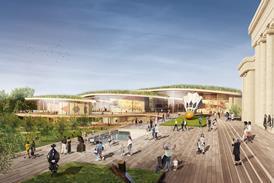

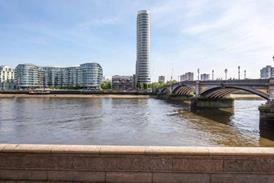











No comments yet